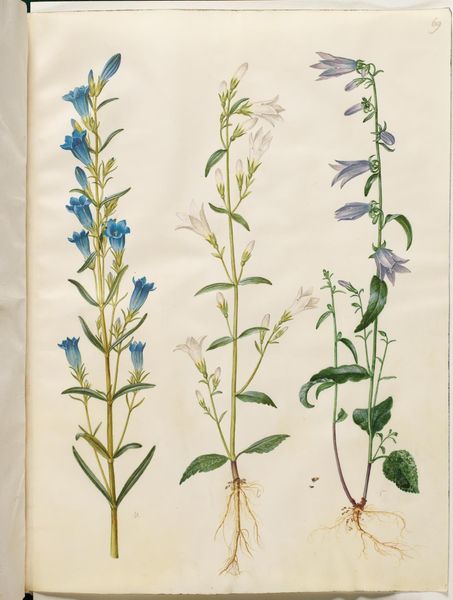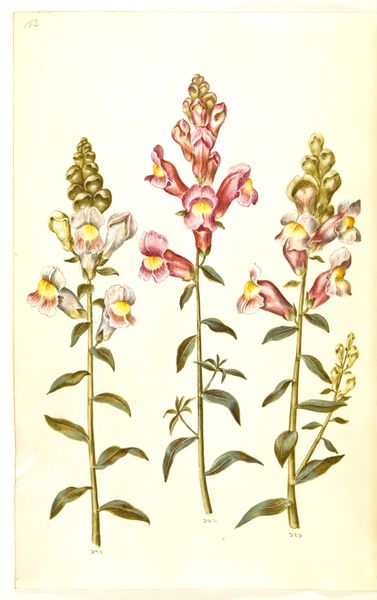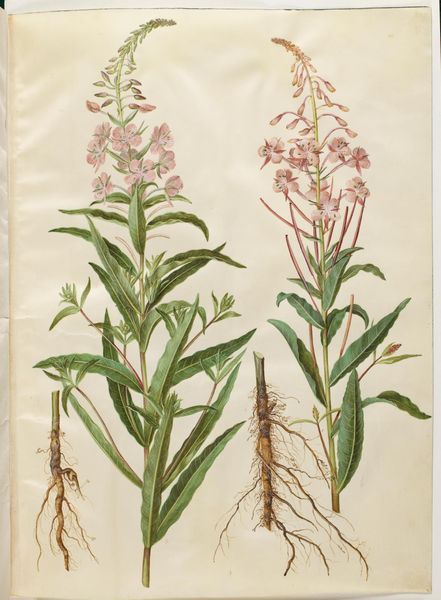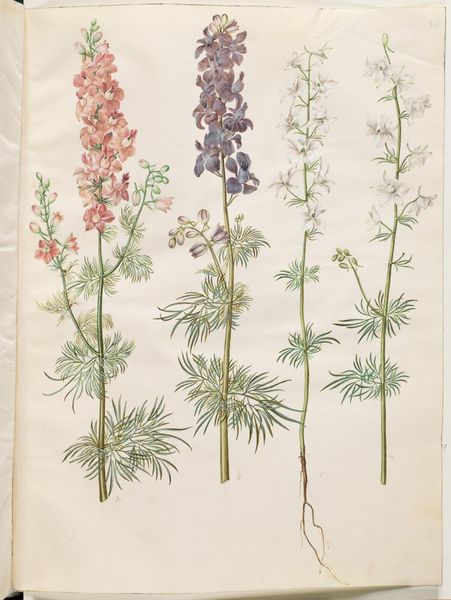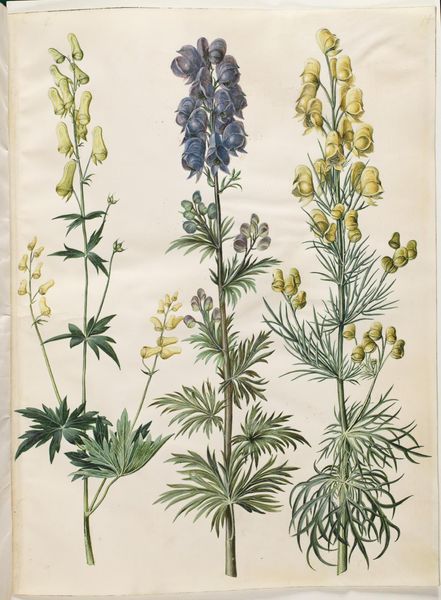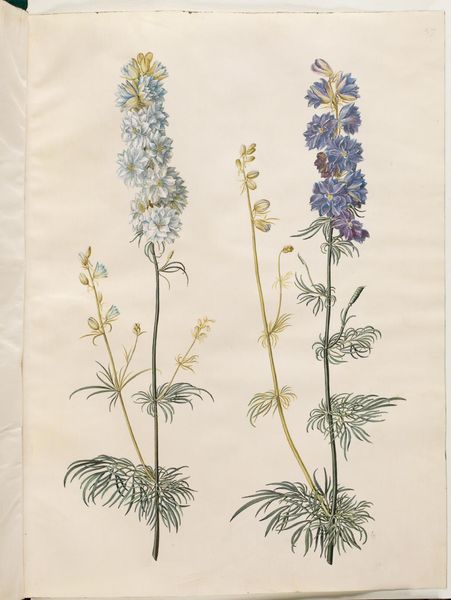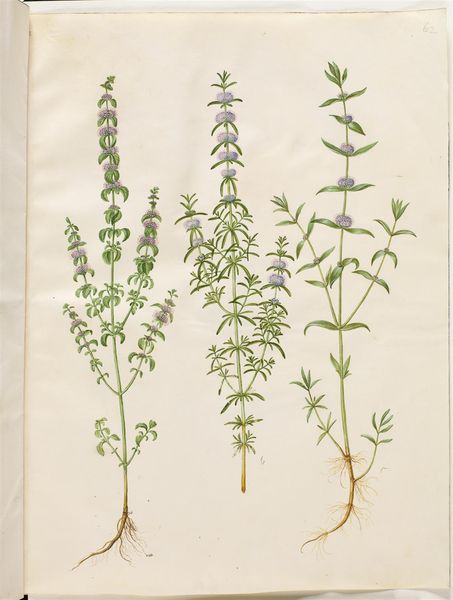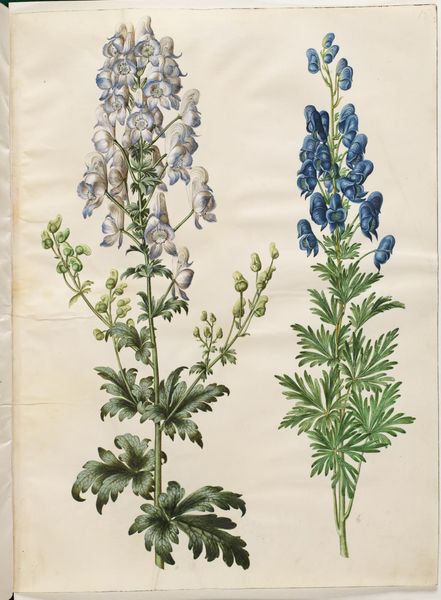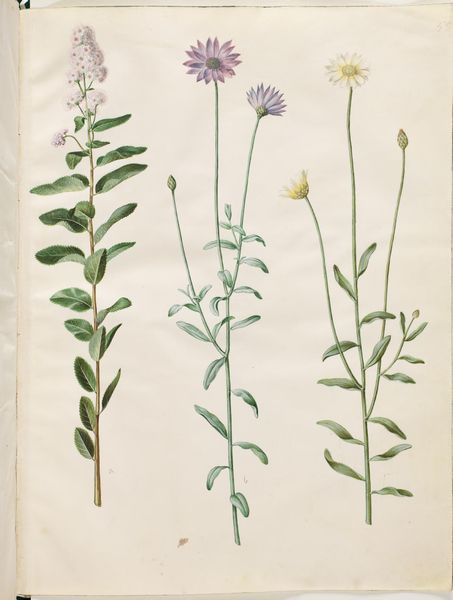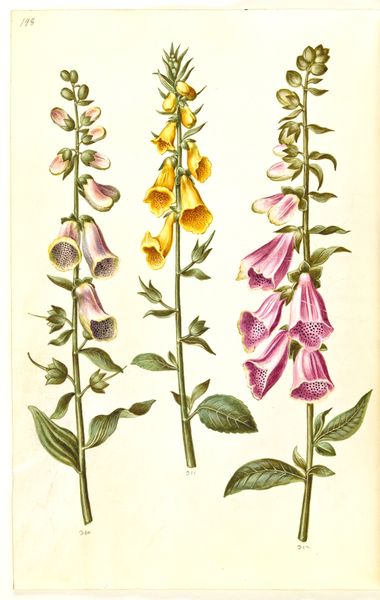
drawing, coloured-pencil, gouache, watercolor
#
drawing
#
coloured-pencil
#
gouache
#
11_renaissance
#
watercolor
#
coloured pencil
Dimensions: 505 mm (height) x 385 mm (width) (bladmaal)
Editor: So, here we have Holtzbecker's *Antirrhinum majus*, made with watercolor, gouache, and colored pencil, sometime between 1649 and 1659. The three snapdragons are so meticulously rendered; the colors are almost muted. How do you see this piece fitting into the art of its time? Curator: It’s important to consider the development of natural history as a field during this period. Botanical illustration was often commissioned by wealthy patrons. It documented exotic or newly discovered plants. The level of detail and scientific accuracy speaks to the changing relationship between art and scientific inquiry at that time, and this image could serve multiple purposes, both aesthetic and informational. Editor: That’s fascinating. I hadn’t thought about the scientific aspect so directly. Did Holtzbecker’s rendering have an impact on, or reflect trends within botanical illustration? Curator: Definitely. Holtzbecker and his contemporaries played a vital role in the rise of botanical illustration as a distinct genre. It reflects both a growing interest in the natural world and the social value attached to scientific knowledge. Also, note how it reflects a cultural shift in power. Royal patronage or display in emerging botanic gardens underscored these themes in the public sphere. The scientific societies were often shaping and being shaped by, these displays. Editor: That's really insightful; it's amazing to consider this image in that broader societal context. Thanks for shedding some light on the history. Curator: It was great discussing the role of this type of illustration in society with you.
Comments
No comments
Be the first to comment and join the conversation on the ultimate creative platform.

